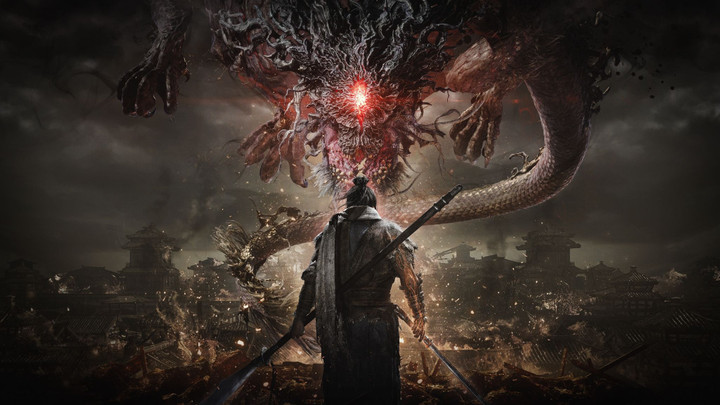Wo Long: Fallen Dynasty is the more aggressive and fast-paced sibling of the Nioh games that's just as intricate and labyrinth in its combat and gameplay mechanics.
While it treads familiar grounds, it improves upon the gameplay formula laid down by the studio's previous endeavors in almost every way. However, redundant enemy encounters, surprisingly easy boss battles, and uninspired loot stop Wo Long: Fallen Dynasty from being the best Team Ninja game ever.
Wo Long Fallen Dynasty Overview
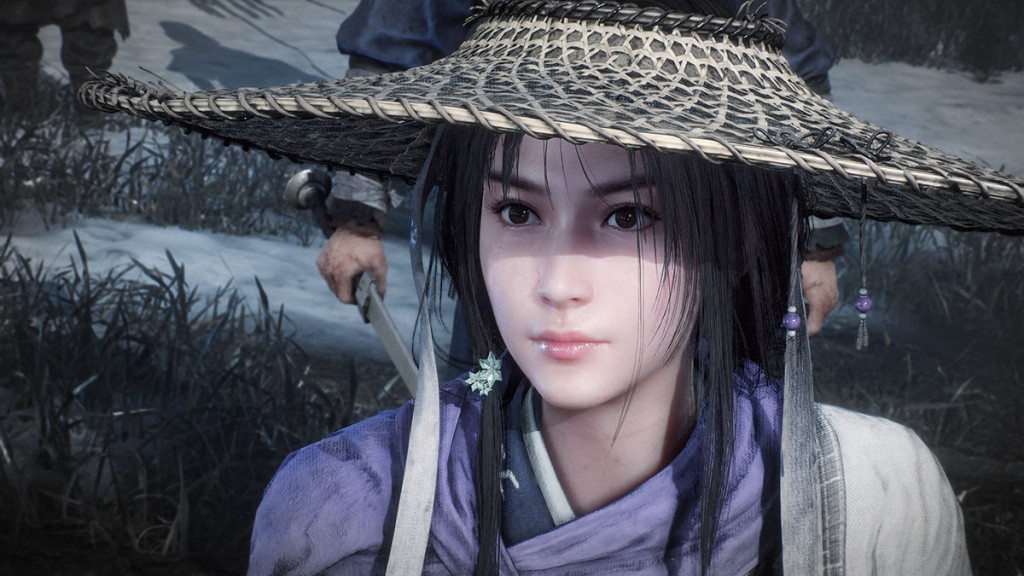
Wo Long: Fallen Dynasty takes place in late 184 A.D. China, in the fictionalized version of the Late Han Dynasty. The Three Kingdoms have been infested with corruption, turning everyone into demons. It's your job, the unnamed protagonist, to cleanse this corruption off these lands and restore order.
While the Ancient Chinese setting is aesthetically very different from the Feudal Japan setting of the Nioh games, they are structurally very similar. Like Nioh, the story in Wo Long introduces several notable figures, this time around from the late Han Dynasty. Every main mission also ends with a boss battle.
The items and loading screen descriptions provide anecdotes on the various characters, locations, and gear in the game. I enjoyed reading them because they served as a lore book for the Late Han Dynasty. Of course, someone well-versed in the history of this Chinese era should be able to appreciate these anecdotes and interactions more.
Wo Long is also Team Ninja's prettiest game to date, and it's evident both in the cutscenes and the gameplay. It's also much more colorful than Nioh 1 & 2, featuring yellowish-brown and pink-purple color palettes.
The cutscenes in Wo Long are a stark departure from the combat (more on that later), featuring more light-hearted interactions that serve as a breath of fresh air from all the chaos of the combat. These are vibrant cinematic sequences that I found quite enthralling. One early cutscene where the character unlocks the Divine Beast, Qinglong, is just awe-inspiring, and I was eager to experience every single one of these heartful moments.
These beautiful sequences kept me invested in the otherwise muddled plot. Nioh games didn't tell intriguing stories, and it's the same here. It's okay since Wo Long's gameplay is nothing less than spectacular.
Understanding Wo Long
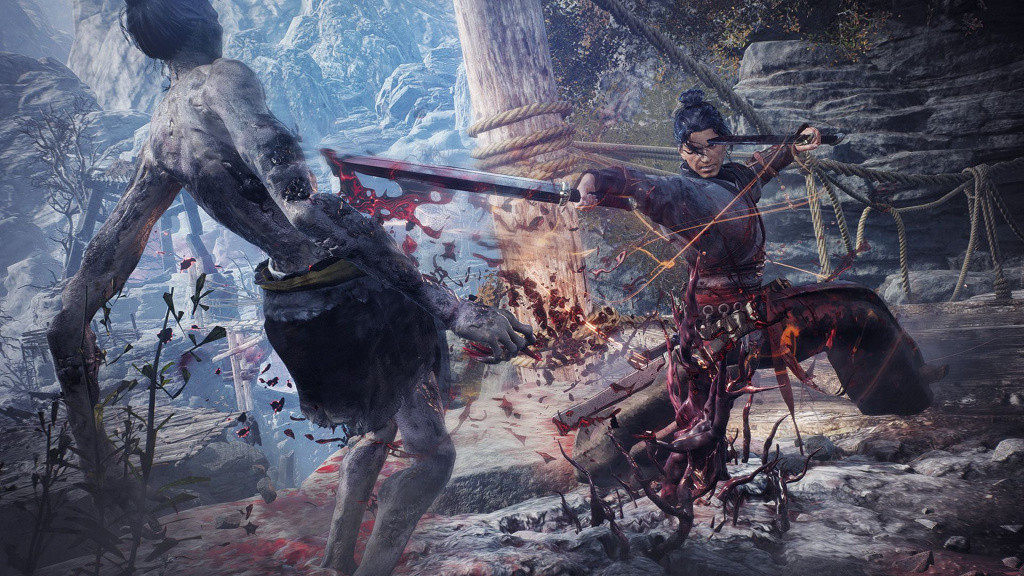
There is a steep learning curve to Wo Long, but when you do master its many mechanics, its swashbuckling combat becomes immensely satisfying.
Wo Long's intricacies appear as soon as you stumble upon the character creation menu. It's absolutely bonkers, with lots of options to create the character of your choice. For instance, you can customize the length and style of your character's bangs. You can even tweak the curliness of your hair. It's absolutely crazy! Oh, and once you unlock the safe hub of the game, you can customize your character's entire appearance for free. I wish more RPGs would allow that.
A quick disclaimer before moving forward. There is multiplayer in Wo Long, which includes co-op and invasion. We didn't get to try co-op, and the invasion didn't work in the review build.
Coming back to the combat, I believe the most immediate difference between Nioh and Wo Long is that the latter is more fast-paced. It's not just the swinging rates of your melee and ranged attacks but also how your character dodge, deflects and jumps. I like the combat of Nioh. I love the combat of Wo Long.
Unlike the Nioh games, you can jump in Wo Long: Fallen Dynasty, which adds more vertically to the gameplay. It's nothing like Sekiro, mind you, since there's no grappling hook for swinging to and fro between areas. It is, however, handy for picking enemies from above and dealing fatal strikes that take away massive chunks of their health. This maneuver becomes more and more important in the latter sections as the number of enemies in the area increases.
Like the Ki system of Nioh, there's a stamina mechanic called Spirit in Wo Long, which governs every action you perform in combat. The upper Spirit Gauge increases when you deal damage, and the lower Spirit Gauge increases when you take damage. You can't perform Martial Arts or cast spells when the lower Spirit Gauge is increasing.
When it gets full, the Spirit Gauge gets disrupted, leaving your character open to fatal strikes. It works similarly for enemies, including bosses. In the boss battles, your main focus will be to disrupt their Spirit Gauge and deal fatal strikes to quickly finish them off.
Understanding the intricacies of Spirit and Spirit Gauge is essential but not enough to get better at Wo Long since it's just one of many complex yet well-thought-out mechanics that make this a very refreshing experience than Nioh and the Soulsborne games.
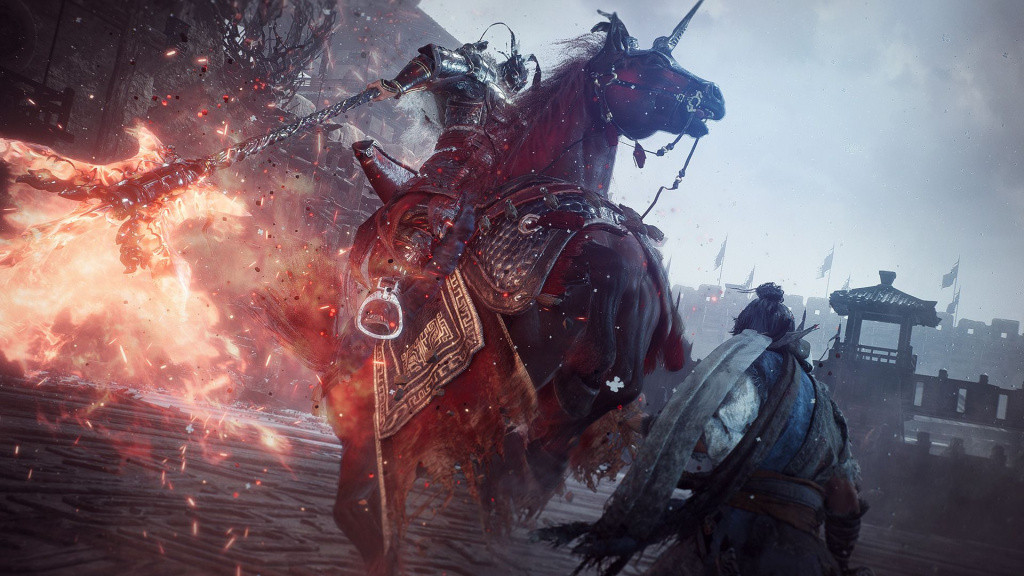
There is a Morale Rank system in Wo Long that fuels both exploration and combat. Every enemy has a Morale rank in the game. The higher their Morale rank, the more damage they deal and the less damage they take. You can increase your Morale Rank by killing enemies. However, every time you die, your Morale Rank will become zero. There is a way to counter that by increasing something called Fortitude Rank.
You can increase your Fortitude rank by Raising Battle Flags and Marking Flags on the battlefield. Battle Flags are the Shrine equivalent of the Nioh games, where you can rest, level up and customize your character. Every time you die, your Morale Rank will reset to your Fortitude rank. For example, if your Fortitude Rank is 10, and your Morale Rank before dying was 20. After you die, your Morale Rank will become 10.
Every Wizardry Spell requires some Morale Rank before you can cast them. Your Morale Rank and Fortitude Rank reset in every mission, so every time you enter a new battlefield, you have to capture some Battle Flags and Marking Flags before you can cast those abilities.
When you die, you also lose half of your Genuine Qi (XP). Of course, you can get them back by killing the enemy that killed you in the first place. Wo Long calls this mechanic Revenge, and it's just as straightforward as it sounds.
It's through its Morale system that Wo Long encourages you to explore every nook and cranny of an area. It becomes especially important in the latter missions when you unlock more powerful spells and abilities that require high Morale Rank to cast. Some of these Marking Flags are especially tricky to find, which makes exploring all the more worthwhile.
Like every Soulslike, resting at a Battle Flag will respawn enemies, but the enemies you killed before will spawn with a lower Morale Rank. Killing enemies stealthily also lowers the enemy's Morale Rank though you earn fewer Morale points this way.
There are more than ten weapon types in Wo Long. These consist of one-handed weapons like Swords and Sabres and two-handed weapons like Glaives, Spears, and Hammers. While every weapon feels similarly floaty and lightweight to control, they come in handy in different situations. They also have unique attack animations, so it's great to switch between them every now and then to keep things fresh.
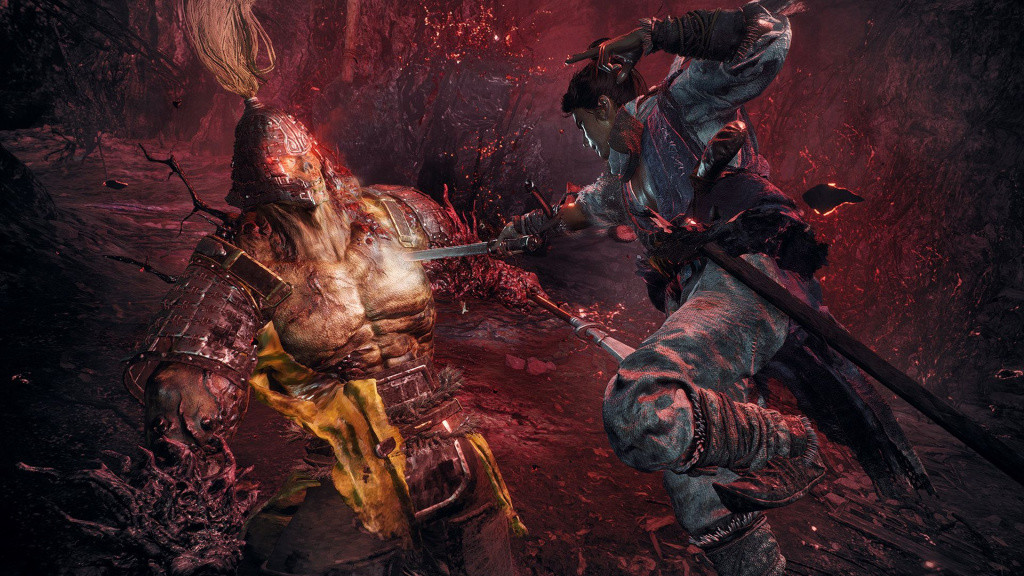
Every weapon has these special effects called Martial Arts, which cost Spirit to perform. These are powerful attacks that reduce the enemy's Spirit Gauge. While the attack animations of these moves are really good, I wish there were more Martial Arts abilities overall. You can, however, mix them up with Wizardry Spells to deal with some devastating combos.
Much like Sekiro, deflection is the heart of the combat in Wo Long: Fallen Dynasty. However, unlike Sekiro, guarding and deflecting means different things in Wo Long and have two different buttons assigned to them.
In Sekiro, timely guarding your attacks resulted in deflection and it filled up the enemy's Posture meter. The only exception was the Mikiri Counter with the red Kanji symbol. In Wo Long, you deflect by using the dodge button instead of the guard button. You can still guard against enemy attacks though it doesn't fill up their lower Spirit Gauge.
Since you have to deflect enemies' attacks either way to disrupt their Spirit Gauge, guarding becomes pretty useless in Wo Long. Make no mistake; it's still vital in some combat scenarios where you're better off not deflecting. However, since it's less impactful than deflecting, you will probably not use it much.
While not everyone would like it, I appreciate Team Ninja's decision to implement the same button for deflecting and dodging instead of deflecting and guarding.
Deflecting regular attacks may take some time to get used to since they are incredibly fast. Once you get better at them, they feel like a faster, more frantic version of the cathartic clashing of steel experience Sekiro offers. Deflecting critical blows, the big red symbol attacks, on the other hand, are very easy. By disrupting an enemy's Spirit Gauge, you can defeat major bosses in just three or four fatal strikes.
It doesn't help that Wo Long has some of the most boring and uninspiring boss battles ever in a Soulslike. There's no real challenge to it, and rarely are there instances where you have to memorize a boss' moves to overcome them.
Combine it with easy-to-deflect critical blows, and Wo Long's boss battles become laughably simple. On the bright side, if you were looking for a relatively easy Soulslike experience, you got it. However, if you still find it tough, there are a bunch of NPC companions in the game that you can call for aid. They all use different Elemental Phases, so call whoever you seem would be more efficient against a particular boss or enemy.
Despite the challenge, successfully deflecting a critical blow remains a satisfying experience through the end, one that I never got enough of, especially since it reminded me how proficient I had become at this core mechanic of the game.
Wo Long features one of the most flexible and satisfying buildcrafting experiences ever in a Soulslike game. For starters, you can respec your character free of cost, which encourages experimenting between different playstyles.
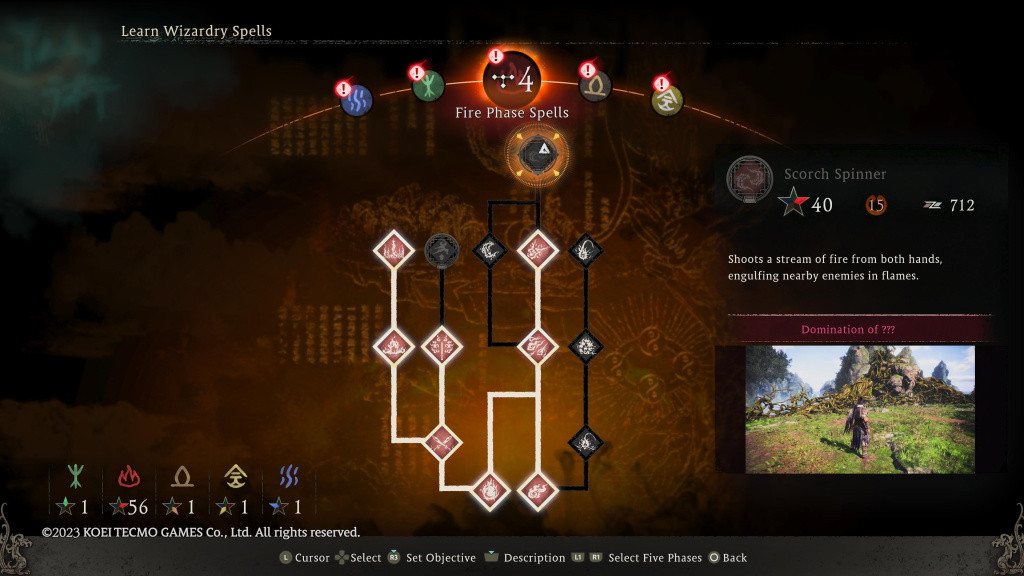
There are five default playstyles you can choose to pursue in Wo Long. Each of these playstyles favors different elemental damage types. These are called Phases, and there are Fire, Water, Metal, Earth, and Wood Phases in the game.
Bosses have an affinity for some elemental damage types and are weak to others. Every Phase has an elaborate set of spells and skills that you can perform on the battlefield. These abilities can be unlocked and equipped by leveling up your character. While some abilities are common among all Phases, others offer completely different ways to approach combat in Wo Long.
Some of these Phase abilities can be synergized with abilities of other Elemental Phases. The game doesn't encourage nor punish you for crafting a hybrid or a conservative build and you are free to go either way.
I kept switching between my five builds, one for each of the five Phases, instead of creating a hybrid one for all. This is something I never usually do in RPGs like these, but since there's no respec cost in Wo Long, and there's no real grind for leveling up, I was tempted to experiment.

Not everything is roses and sunshine, however. Like the Nioh games, Wo Long features a Diablo-style loot-based system. This sounds tempting in theory, but in reality, there's nothing here that could compete with the likes of Diablo, Destiny, and even Nioh 1 &2.
My hunger for new exquisite gear pieces died quite early in the game, and I resorted to upgrading the weapons and armor I already had. The game's incredible Embedment system that allows you to pick out gear traits and insert them into the gear of your choice helped, but ultimately, there's not much there to pick from.
Wo Long also doesn't fix the cluttered inventory management that plagued both Nioh 1 and 2. Good luck sorting hundreds of weapons and armor in your inventory every time you stop by the Blacksmith for an upgrade.
Between the flexible buildcrafting, easy resource farming, and solid combat, I couldn't stop wondering how player-friendly Wo Long really is.
It doesn't revolutionize the soulslike genre, but it's so much fun to play. Furthermore, this is a game that respects the player's time. It's a surprisingly short adventure for a game of this caliber, clocking in just under 40 hours. This is mostly because there is no endless grind for resources to level up, respec, or upgrade your character. However, a relatively smaller campaign doesn't stop it from being a memorable experience.

 No ads, our video library,
No ads, our video library,
